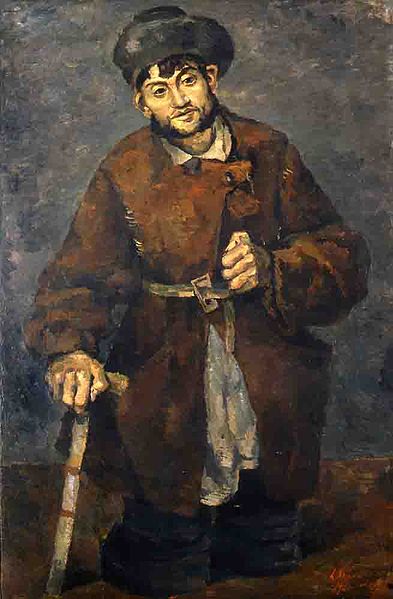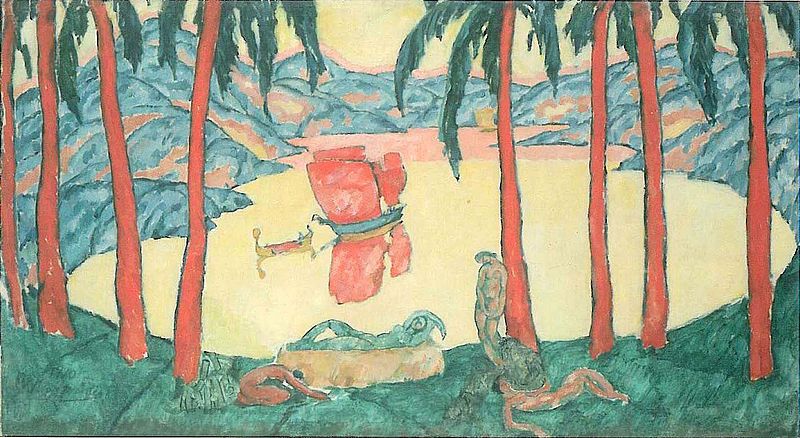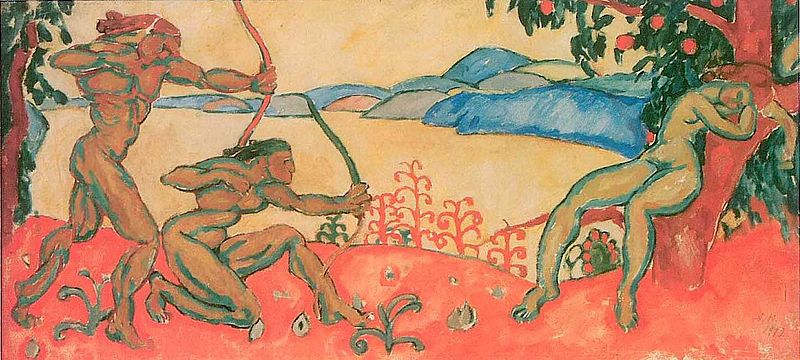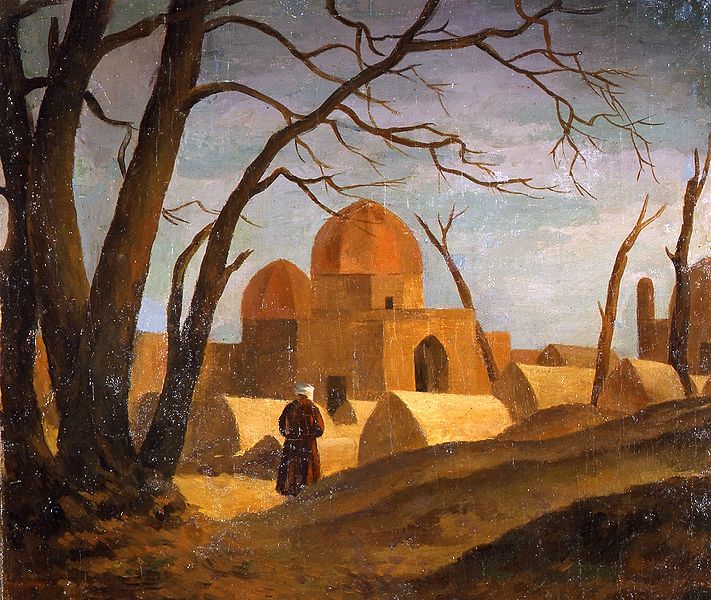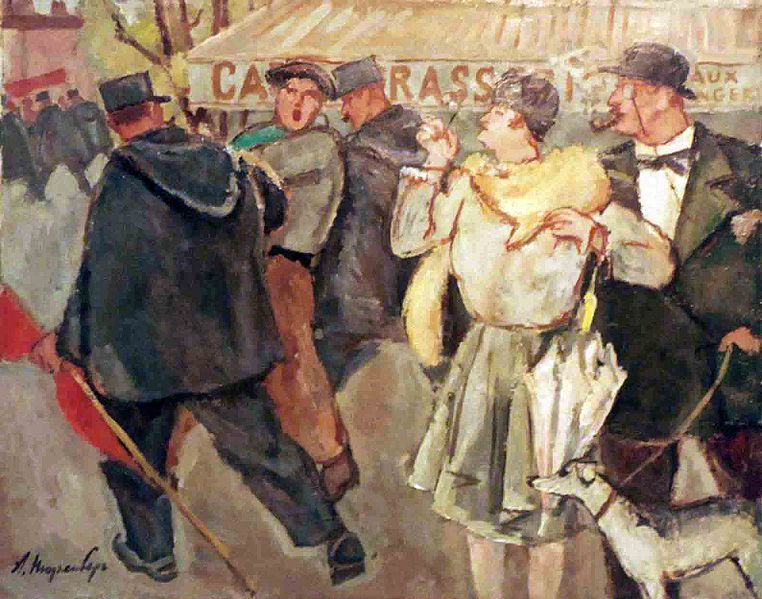<Back to Index>
- Painter Nadezhda Andreeva Udaltsova, 1886
- Painter and Critic Amshey Markovich Nurenberg, 1887
PAGE SPONSOR
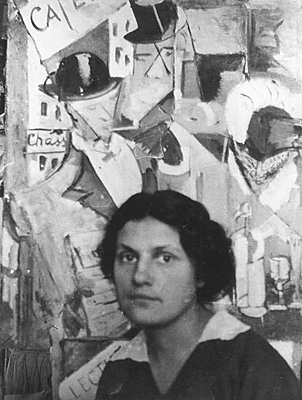
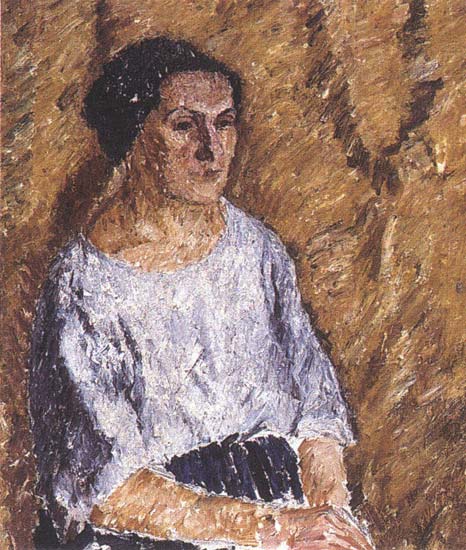
Nadezhda Andreeva Udaltsova (Russian: Наде́жда Андре́евна Удальцо́ва 1886 - 1961) was a Russian avant garde artist (cubist, suprematist) and painter.
Nadezhda Udaltsova was born in the town of Orel in Russia. Udaltsova studied at private art studios in Moscow, then in Paris under André Segonzac.
After returning to Russia, she worked in Vladimir Tatlin's studio. From 1910 to 1914 she was a member of the union of artists Soyuz Molodyozhi, together with David Burliuk, Vladimir Burliuk, Pavel Filonov, Kazimir Malevich, Ivan Kliun and others.
In 1915, she joined the movement of Kazimir Malevich's followers Supremus, and in 1915 - 1916, together with other suprematist artists (Kazimir Malevich, Aleksandra Ekster, Liubov Popova, Nina Genke, Olga Rozanova, Ivan Kliun, Ivan Puni, Ksenia Boguslavskaya and others) worked at the Verbovka Village Folk Center.
After the October Revolution she taught at VKhuTeMas and Institute for Artistic Culture (InKhuK). She resigned from InKhuK in opposition to plans for replacing easel painting with industrial art.
In the 1920s, under the influence of her husband and notable Russian avant garde painter, Alexander Drevin, she returned to figurative art.
Udaltsova and Drevin were the founding members of the artistic group Thirteen.
In 1929 - 1932 they traveled to the Altay Mountains, then in 1933 - 1935 they worked in Armenia. In 1938 Alexander Drevin was arrested and executed by the NKVD, and Udaltsova became a persona non grata in the world of Soviet art. She died in 1961 in Moscow.
Udaltsova crater on Venus is named
after her. Her son was the prominent Russian sculptor Andrei Drevin (1921 -
1996).
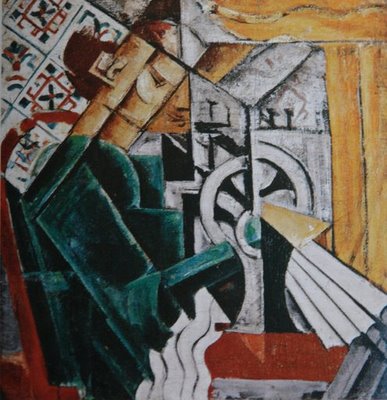
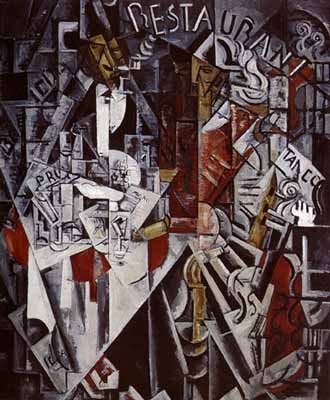
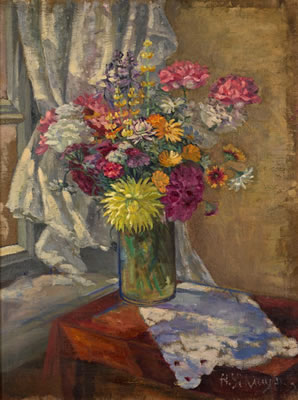
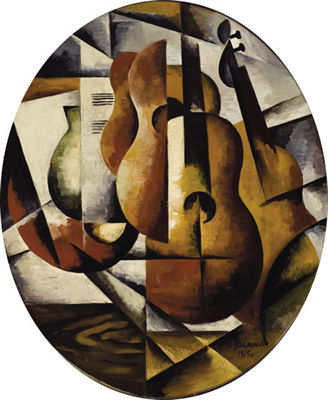
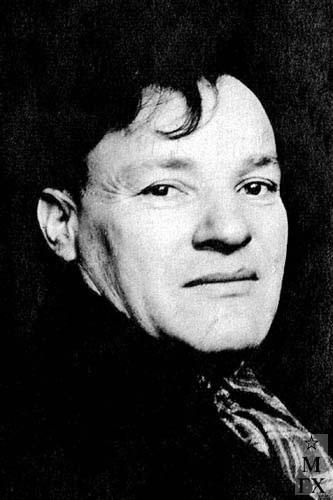
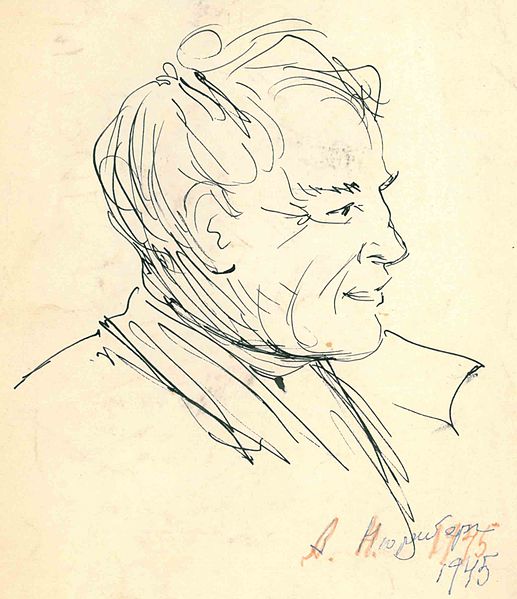
Amshey Markovich Nurenberg (Russian: Амшей Маркович Нюренберг; April 17, 1887, Elisavetgrad - 10 January 1979, Moscow) was a Ukrainian, Russian and Soviet painter, graphic artist, art critic, and memoirist.
In 1904 - 1910 he studied in the Odessa School of Arts with Professor Cyriaque Costandi. After having graduated from the School he continued his education in Paris. He lived in the Latin Quarter with other artists from Russia and during a year shared an atelier with M. Chagall in the phalanstery La Ruche.
In 1913 he returned to Odessa, where headed the group of modernists "The Independent", founded the private school "Free Studio" (1918), and participated in exhibitions of Odessa artists. After the Russian Revolution (1917) he was appointed as the People's Commissar of Arts of Odessa and Head of the Committee for Protecting the Artistic and Historic Heritage.
Since 1920 he lived in Moscow, where was the first art columnist of the newspaper Pravda, worked in the ROSTA Windows together with Vladimir Mayakovsky, and was professor of history of the Western art at the VKhUTEMAS. In 1927 - 29 he was dispatched to Paris by the People's Commissar for Education A. Lunacharsky to read lectures on new Soviet arts. In 1932 he contributed to the organization of the Moscow Regional Union of Soviet Artists (МОССХ) which later became the USSR Union of Artists.
During World War II Nurenberg was in the evacuation in Tashkent (Uzbekistan). He continued to work as a painter and finished a series of anti - war paintings. After the war he continued to work as an artist in Moscow, in particular for the Museum of Revolution.
During his life, Nurenberg has worked in different styles, from avant garde to realism, having always remained faithful to the traditions of the School of Paris.
Wife — ballerina and artist
Polina Mamichava Полина Николаевна
Мамичева (1894 -
1978).
Daughter — opera singer Nina Nelina (born
Nurenberg) coloratura soprano, soloist of the Bolshoi
Theater from 1946
to 1957 (Нина Нелина, 1923 - 1966) and wife of the
writer Yury Trifonov; their daughter (granddaughter
of A. Nurenberg) — Dr. Olga Tangian Ольга Юрьевна Тангян (born
Trifonova in 1951). One of brothers — the artist David
Devinov Давид Девинов (Давид Маркович
Нюренберг, 1896 - 1964).
April 21, 1887, birth in Elisavetgrad (now Kirovograd), Ukraine, in a Jewish family. Parents were fishmongers. Amshey was the elder of 10 children
1905 graduated from the Elisavetgrad high school, where arts were taught by Ilya Repin's apprentice Feodosiy Kozachinsky
1905 - 11 studied at the Odessa School of Arts in the class of Professor Cyriaque Costandi
1911 - 13 stayed in Paris, studied in private Academies of Arts, worked as an art reporter for the Russian language newspaper "Paris Bulletin" (Парижский вестник). Shared an atelier with M.Chagall in the phalanstery La Ruche in the Passage de Dantzig
1913 returned to Elisavetgrad, teaching activities
1915 moved to Odessa, joint exhibitions with a group of modernists, later named «Odessa Parisians». Organisation of the "Society of the Independent" transformed in 1918 into the "Association of Independent Artists"
1915 married ballerina Polina Mamichava (1894 - 1978)
1918 foundation of the "Free Studio" together with the "Children Academy". Teachers were the artists who studied in France (Amshey Nurenberg, Sigismund Olesevich, Alex (Sandro) Fasini, Theophil Freiermann, Isaak Malik). Among Nurenberg students were Victor Midler (later the senior curator of the Department of the modern Russian art of the Tretjykov Gallery), wife Polina Mamicheva, and Naum Sobol (stage designer)
1919 People's Commissar of Arts of Odessa and Head of the Committee for Protecting the Artistic and Historic Heritage
1919 - 20 Editor - in - chief of the first Soviet newspaper in Elisavetgrad "Red village" (Красная деревня)
1920 moved to Moscow, work in the ROSTA Windows together with Vladimir Mayakovsky, Ivan Maljutin, and Mikhail Cheremnych; making over 200 posters
1921 Organized the New Society of Painting (НОЖ) together with artists Alexander Gluskin, Samuel Adlivankin, Georgy Ryazhskiy, Mikhail Perutskiy, and others; writing the manifesto of the society
1921 - 22 Traveled to Uzbekistan together with Victor Midler and Polina Mamicheva to organize the restoration of cultural and historic monuments
1922 - 24 professor of history of the Western Art at the VKhUTEMAS
1923 birth of the daughter Nina (soloist of the Bolshoi Theater under the stage name Nina Nelina)
1923 - 25 joint exhibitions with the former members of the group Jack of Diamonds (1910 - 17) and writing the art manifesto for their new society Moscow Painters under the chairmanship of Pyotr Konchalovsky
1924 - 26 first arts columnist of the newspaper Pravda
1927 - 29 Mission to Paris by the People's Commissar of Education Anatoly Lunacharsky as "cultural ambassador" for lecturing on new Soviet arts and writing surveys on French arts for the Soviet press. Participation in the Paris Salon d'automne 1928
1930s contribution to the organization of the Moscow Regional Union of Soviet Artists (МОССХ), worked for the Museum of Revolution, trips to gather material for creative work to kolkhoz's of Ukraine and North Caucasus and to coal fields of Kuzbas
1941 - 43 evacuation to Tashkent during the World War II. Worked at the Uzbek Union of Soviet Artists
1943 returned to Moscow. Work for the Museum of Revolution
1950s retirement. Continuation of active artistic and literary work, including participation in exhibitions, writing memoirs, and publications in newspapers and journals
January 10, 1979, death at the age of 91 in Moscow. Burial at the Vagankov cemetery.
